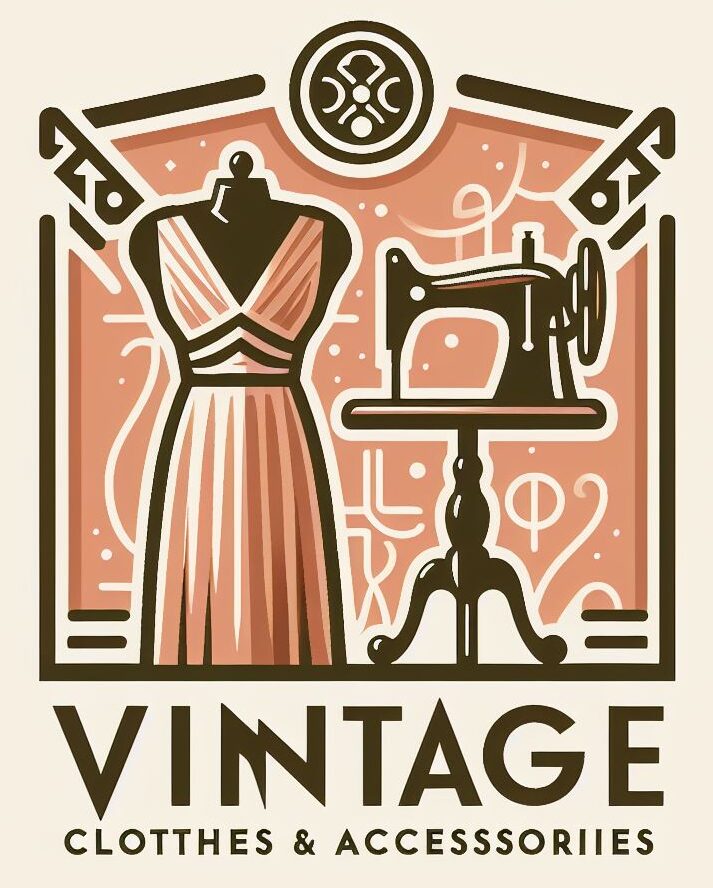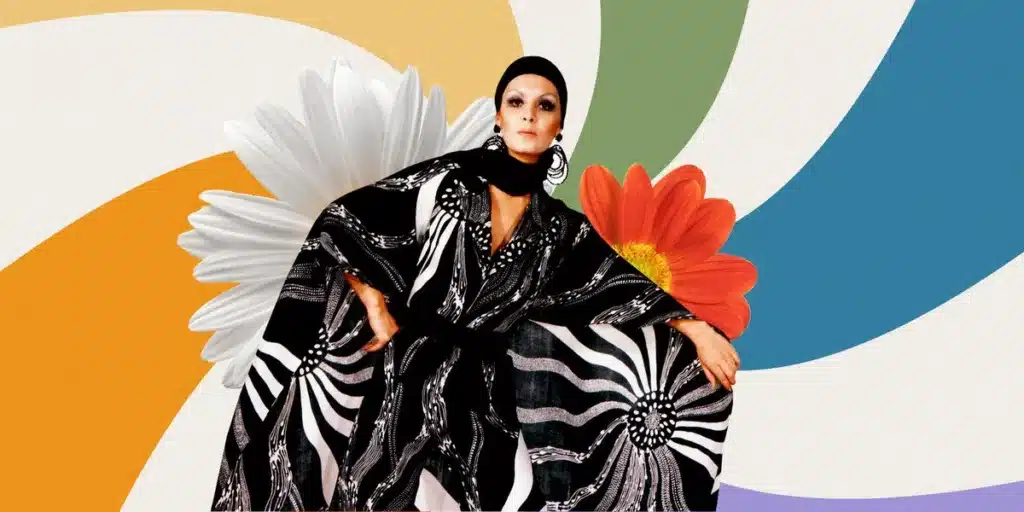
Uncovering Treasures: Places to Find Authentic Vintage Clothing
The surge in popularity of vintage clothing can be attributed to several factors, such as reflecting shifts in fashion, sustainability consciousness, and a desire for individuality. The reasons behind the surge in vintage fashion can mean different things to different followers, but often would include certain facts.
Vintage clothing can bring a sense of nostalgia, allowing people to connect with the past and evoke a certain sentiment or era. Wearing vintage pieces can be a way to express the love or appreciation for bygone styles and trends.
Individuals seek ways to express their unique style and stand out from mainstream fashion. Vintage clothing offers a diverse range of styles that may not be readily available in contemporary fashion, allowing individuals to curate a distinctive wardrobe.
Due to the rising interest in sustainable fashion, there is a growing awareness of environmental issues and the impact of fast fashion on our planet. Vintage clothing is a sustainable option as it promotes the reuse of existing garments, reducing the demand for new production and contributing to a more circular fashion economy.
Historically, these clothes are often associated with higher quality materials, bespoke fabrics, and craftsmanship. Many vintage pieces were made to last, using durable fabrics and construction techniques that may not be as prevalent in mass-produced contemporary fashion.
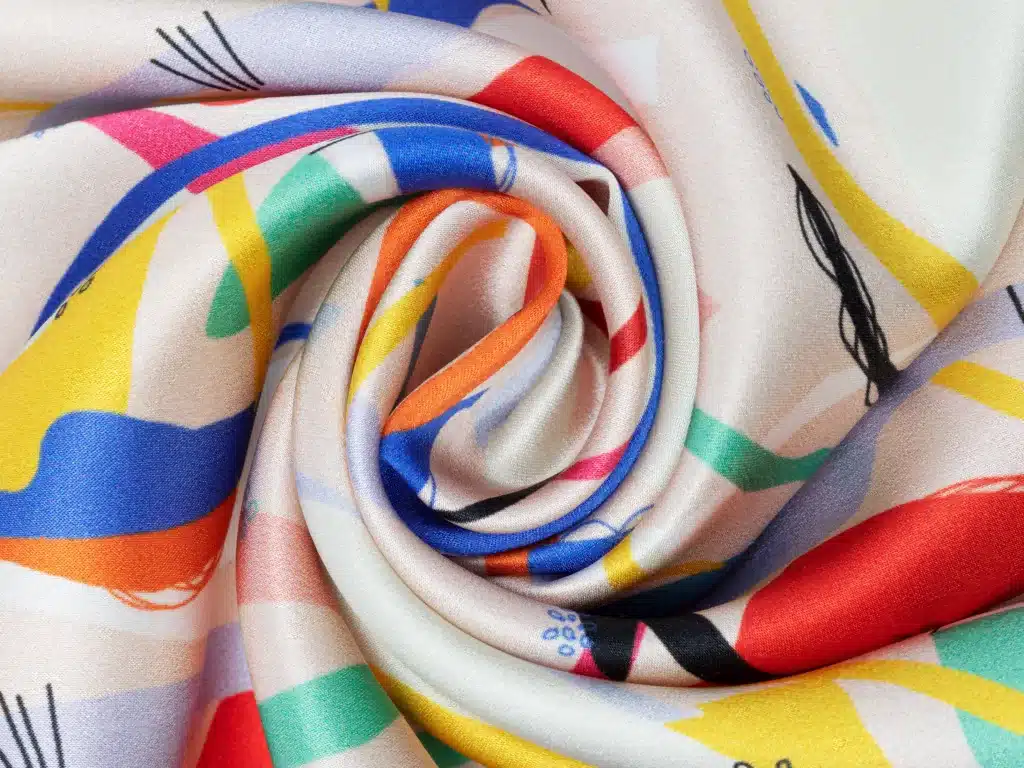
Thrift shopping can be a more budget-friendly option, as compared to purchasing new designer items. To find authentic vintage clothing you can start by looking through op shops, where you might find unique and well-made pieces, flea markets, or online platforms – without breaking the budget.
Retro fashion is often influenced by various cultural movements, music genres, and subcultures. As these influences resurface in popular culture, there is a renewed interest in the corresponding vintage styles associated with those periods. And, with the rise of social media platforms, it has allowed fashion enthusiasts and influencers to showcase their unique vintage finds, illustrating how to also spot authentic vintage fashion online – guiding others to explore and adopt vintage fashion. Platforms like Instagram and Pinterest serve as visual inspiration for incorporating vintage pieces into modern wardrobes.
Some consumers have rejected the fast fashion industry, due to ethical concerns, exploitation of labor, and environmental impact. Vintage clothing provides an alternative that aligns with a more mindful and ethical approach to fashion use. While consumers become more conscious of their fashion choices, vintage clothing continues to play a significant role in the evolving landscape of the fashion industry.
To spot authentic vintage fashion – start by exploring local thrift shops and specialized vintage stores which can be a rewarding and unique experience, and spend it with a friend or family member – as I like to call it, having some “me time”. Plan a day out for your vintage shopping adventure, throw in some lunch along the way, it will make the day even more special.
Research your local thrift stores and vintage shops, and check their online reviews or recommendations from people you know or who shop there regularly – will help you find hidden gems. It’s all about the thrill of the hunt, so keep an open mind as you explore different styles and eras, as you just might find unexpected treasures. Plan your visit on days when they have sales on or offer discount racks, which will maximize your savings.
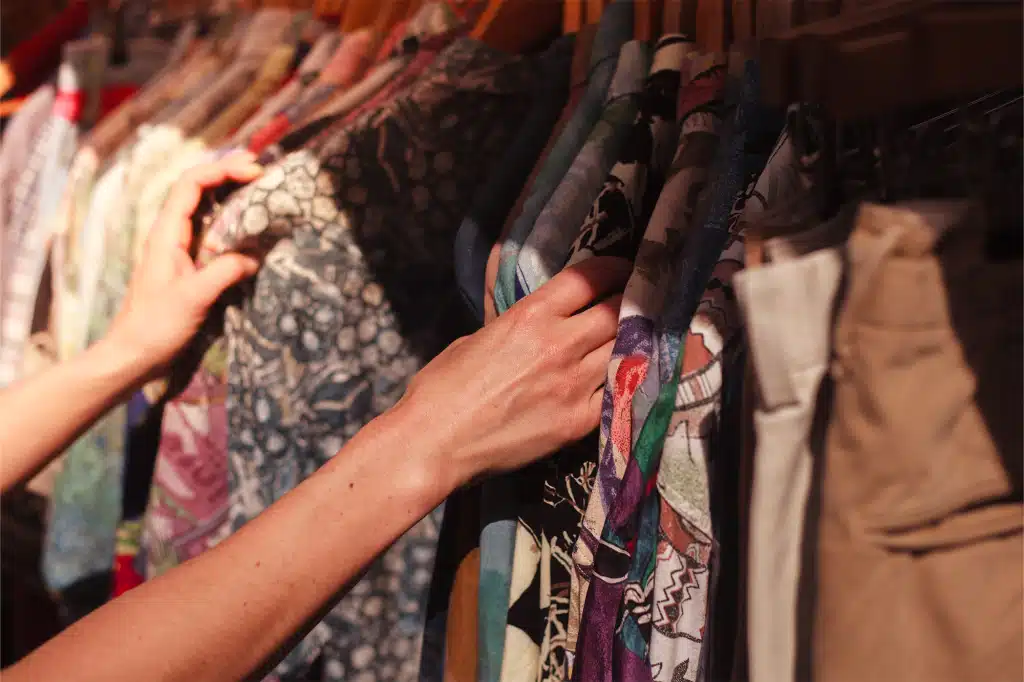
Once inside, inspect the items carefully for wear and tear – and that includes any accessories or jewellery, you might find. Minor flaws can sometimes we fixed, but be aware of the condition before you purchase. Bargaining is sometimes acceptable at these places, don’t be afraid to ask for a discount if the item is damaged. Using cash to purchase items is always a good idea as you usually can negotiate a better deal with cash. Trying on is always recommended, and if you are accompanied by a friend, they can usually give you an opinion of what fits and suits you best. I always say that “two sets of eyes are better than one” when it comes to hunting for a bargain. Do keep in mind that vintage sizing is different from contemporary, and is normally much smaller.
If you find something interesting, don’t hesitate to ask the shop owner or staff about its history. Knowing the background of an item can add to its charm and value. Staying connected by following vintage or thrift shops on social media is a great way to be updated on their inventory or collections, as they often promote new arrivals or special events. By shopping local, you are also supporting small businesses in your community whilst helping the environment in a sustainable and eco-friendly way. Be aware, that you may not find what you are looking for in the first instance, but be patient and take your time finding the right piece. Enjoy the adventure, and keep hunting, as you will undoubtedly find it.
Attending estate sales, flea markets, and auctions is another fantastic way to discover unique vintage finds. To increase your chances of finding hidden treasures, keep some things in mind.
- Plan your schedule according to their specific dates and times and arrive early for the best selection of items.
- Once again bring cash, as many vendors prefer cash transactions and it has more bargaining power for you as a consumer, which makes the buying process a lot smoother.
- Don’t get carried away in the excitement of finding vintage items, but set yourself a budget to avoid overspending.
- Bring along exact measurements of your size, as there may not be an area to try something on – this is imperative, as most vendors do not issue a refund for change of mind.
- Inspect all items you wish to purchase for any flaws or damage, and be aware of the condition before you make a commitment to buy.
- If you attend an auction, be familiar with their rules and bidding processes. Pay attention to starting bids, bid increments and any buyer’s premiums.
- At estate sales, don’t hesitate in asking questions the organizers about the history and condition of any items, as they are often quite willing to provide this information.
- Bargaining can be common in flea markets or estate sales, always be polite and respectful, but don’t be afraid to speak up – if you wish to negotiate.
- At auctions there is usually etiquette, so if attending be mindful of other bidders, and raise you bid card clearly. Any disruptive behaviour is usually not tolerated.
- Get to know local vintage dealers or collectors at these events. They may offer insights, tips, or even be willing to share information about upcoming sales.
- Before attending auctions, research the potential value of the items you’re interested in. This knowledge will help you set realistic bidding limits.
- Some auctions now take place online. Explore online platforms that specialize in vintage items and participate in virtual auctions, but be prepared, as distractions can cause you to miss out on your particular item, so stay focused and keep your eye out on any unique pieces.
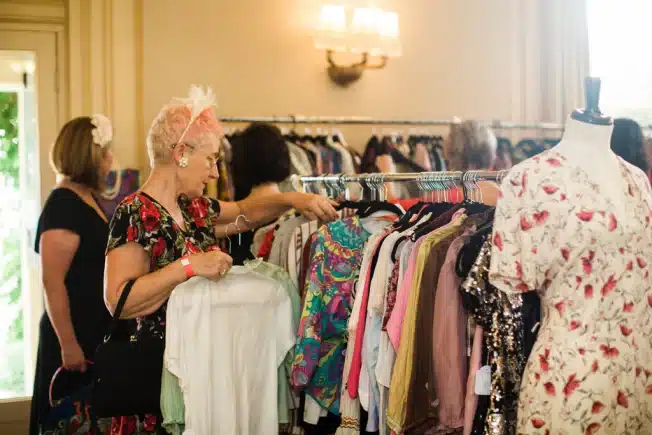
Leveraging online marketplaces and forums is an excellent way for vintage enthusiasts to connect with sellers, buyers, and fellow collectors. Here are some tips on how to make the most of these platforms:
Explore Specialized Platforms:
Look for online marketplaces that specifically cater to vintage and collectible items. Websites like Etsy, eBay, Ruby Lane, are popular platforms where you can find a wide range of vintage treasures, with Etsy being the most in demand for vintage fashion items. Here are some vintage finds with Etsy, but you can narrow your search by using keywords for certain names.
Join Niche Forums and Communities:
Participate in online forums and communities dedicated to vintage collecting. Platforms like Reddit (e.g., r/vintage), vintage-specific forums, or collector groups on social media can provide valuable insights, advice, with a sense of community spirit.
Create Alerts:
Many online marketplaces allow you to set up alerts – for example (add to wish list) for specific searches. This way, you’ll be notified when new items matching your criteria are listed, one such online marketplace is Ebay. These are some marketplaces which are (in Australia), Amazon, Kogan, and MyDeal.
Build a Profile:
If the online platform allows it, create a profile that showcases your interests and collections. This can help you connect with like-minded individuals and attract sellers with similar tastes.
Check Reviews and Ratings:
Before making a purchase from a seller, check their reviews and ratings. This can give you an idea of their reliability and the quality of their vintage items, especially if it’s coming from overseas and you can’t go and physically look at the item yourself.
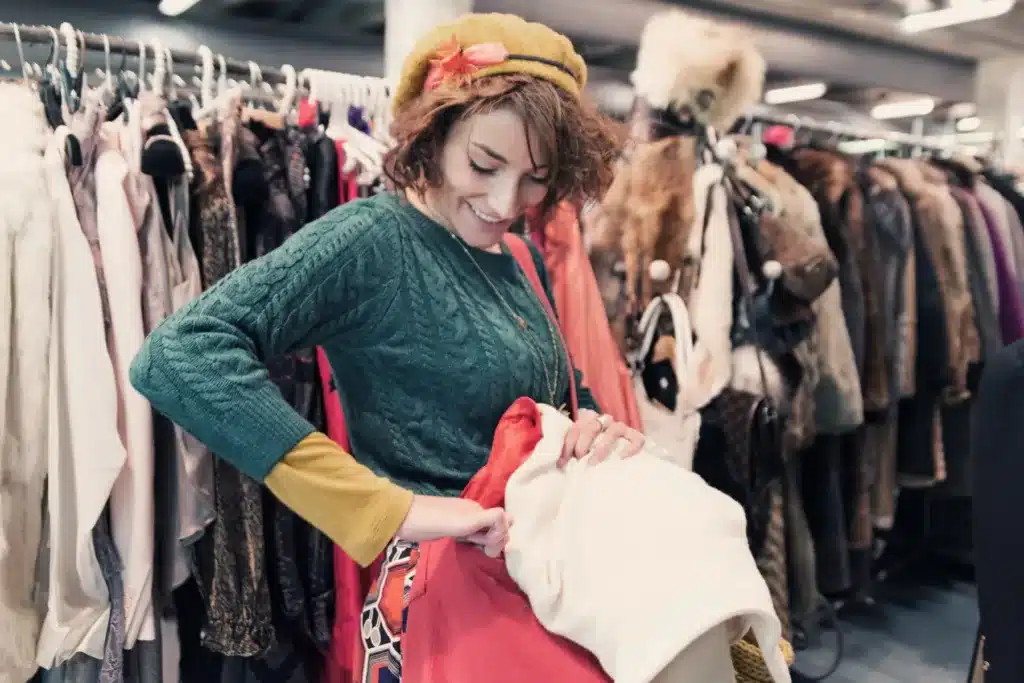
Ask Questions:
Don’t hesitate to ask sellers questions about the condition, history, or any other details of the vintage items you’re interested in. That way you can gauge how interested they are in trying to help you. Communication is the key to a successful transaction.
Participate in Online Auctions:
Many online platforms host auctions for vintage items. You can participate in these auctions by registering your interest, and they will inform you of dates they hold these auctions , so you might be able to potentially find unique pieces, and engage in the excitement of competitive bidding.
Stay Informed About Trends:
Follow blogs, social media accounts, or newsletters dedicated to vintage collecting to stay informed about current trends, popular items, and upcoming events or sales.
Utilize Social Media:
Platforms such as Instagram, Pinterest, and Facebook have vibrant vintage communities. Follow relevant accounts, join groups, and use hashtags (on your socials) to discover and share vintage finds.
Sell or Trade Items:
If you have vintage items to sell or are interested in trading, explore platforms that facilitate these transactions. Some forums and groups allow members to exchange or sell items within the community. Facebook has Marketplace, and we have Gumtree which is another online platform (in Australia) which we can use to buy, sell or trade items of interest.
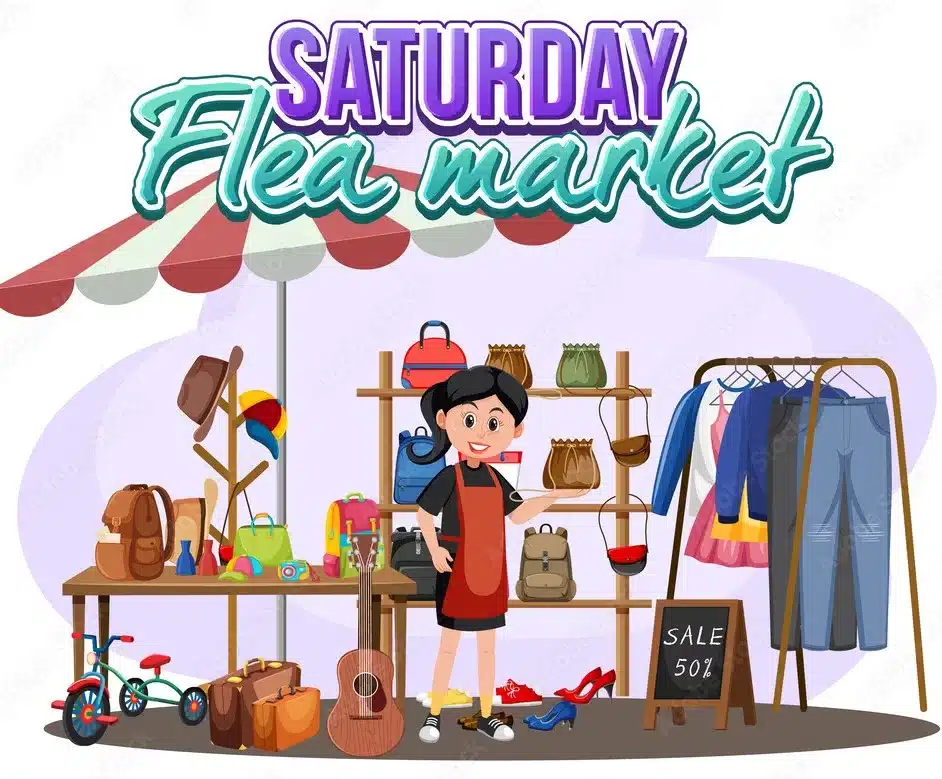
Attend Virtual Events:
Look for virtual vintage fairs, shows, or online market events. These can be excellent opportunities to connect with sellers and other enthusiasts from the comfort of your home. However you won’t be able to use cash, as they would only accept card payments for this.
Stay Safe:
When conducting your transactions online, prioritize safety. Use secure payment methods, be cautious of potential scams, and ensure that the platform has a reliable dispute resolution process.
Share Your Finds:
Engage with certain communities or special group memberships, by sharing your own vintage finds, or fashionable collections. This not only contributes to the group, but also provides opportunities for discussion and connection, and allows vintage enthusiasts to expand their network of friends within the vintage clothing community.
Vintage vs. Reproduction: Identifying Genuine Pieces
To recognize historic fashion trends and stylistic elements, you need to understand the distinctive features and characteristics of clothing and accessories – identifying genuine pieces from different time periods, as vintage and not reproduction. We look at some of the key points below.
Silhouettes:
Pay attention to the overall shape and silhouette of the garment. Silhouettes can vary widely from era to era, such as the fitted and corseted styles of the Victorian era to the loose and flowing shapes of the 1920s. This can be spotted quite easily when looking amongst garment racks.
Fabrics and Textures:
Different time periods favored specific fabrics and textures. For example, the 1960s embraced bold and colorful synthetic fabrics, while the Victorian era often featured heavy, elaborate textiles like velvet and silk.
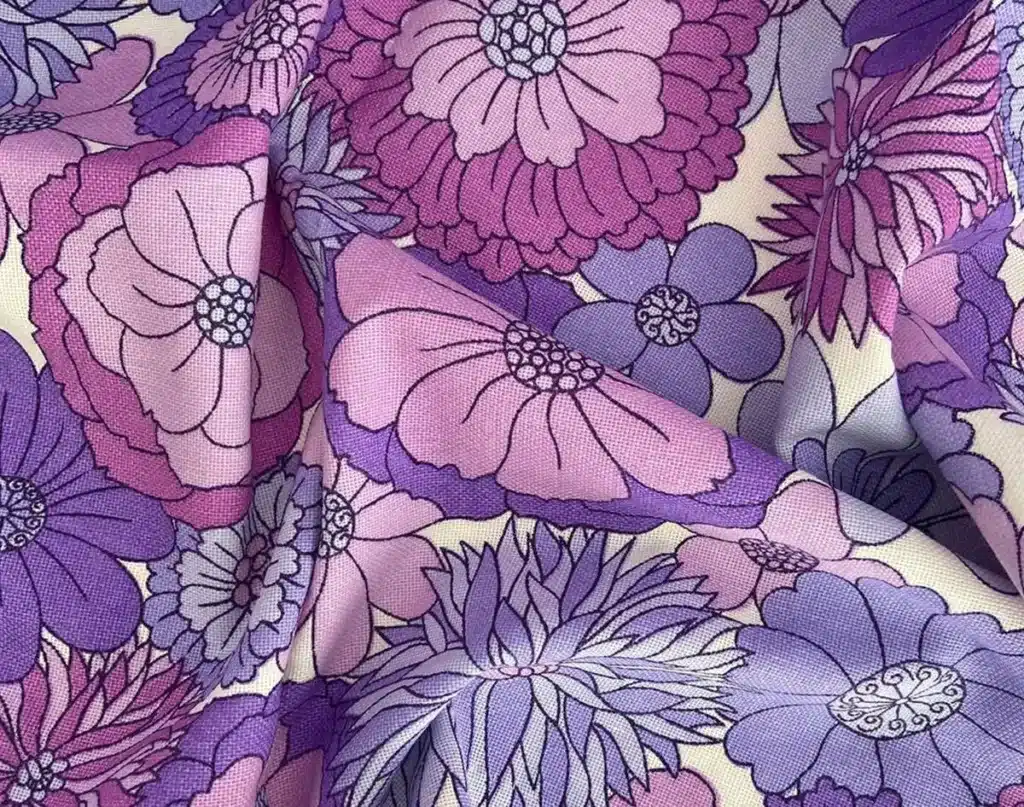
Color Palette:
Each era had its own preferred color palette. Pastel colors were popular in the 1950s, while the 1970s embraced earthy tones and bold patterns.
Details and Embellishments:
Look for distinctive details and embellishments. Examples include lace and ruffles in Victorian fashion, fringe and beads in the 1920s, or bold prints and appliqués in the 1960s.
Accessories:
Accessories play a crucial role in defining a specific era. For instance, wide-brimmed hats were common in the 1910s, while the 1980s saw the rise of statement jewelry and oversized sunglasses.
Cultural Influences:
Fashion is often influenced by the socio-political and cultural climate of the time. For example, wartime rationing in the 1940’s led to simpler and more practical clothing designs.
Iconic Designers:
Familiarize yourself with the work of iconic fashion designers from different eras, who often leave a significant impact on the fashion trends of their time. Designers such as Coco Chanel or Yves Saint Laurent would have their own distinct labels.
Popular Styles and Subcultures:
Certain styles become associated with specific subcultures or movements. British punk fashion in the 1970s/1980’s for example, had a distinct and rebellious style that included ripped clothing, anarchic slogans and bold accessories, epitomized by the look and attitude of the Sex Pistols.
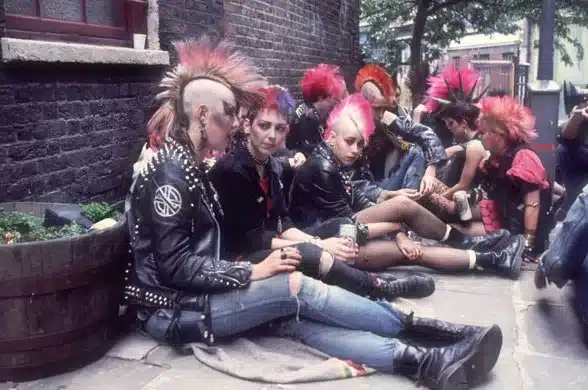
Technology and Innovation:
Advances in technology often influence fashion. The use of new materials, production methods, and techniques can shape the style of clothing in a particular era. Such as in the 1950’s, where synthetic fibers were first introduced, but became more popular in the 1960’s as polyester was widely produced.
By combining these elements, you can develop a keen eye for recognizing historic fashion trends and stylistic elements, allowing you to appreciate and identify the unique characteristics of clothing from different periods.
Analyzing Construction Details like Stitching, Fabric and Closures
To understand the quality, durability, and overall craftsmanship of the garment, you need to analyze the construction detail elements such as stitching, fabric and closures. *This next section may be difficult for non-sewists to understand? If you are not familiar with garment construction – you may find it overwhelming, so I suggest finding someone who is in the know, to help you understand how to identify these elements*
Stitching:
Stitching: Look at the type of stitches used. Straight stitches, zigzag stitches, or serged edges all serve different purposes. Neat and consistent stitching is a sign of quality.
Stitch Density: Higher stitch density generally indicates better quality. Loose or uneven stitches can lead to durability issues.
Seam Finishing: Check how the seams are finished. Enclosed seams (french seams) or serged edges prevent fraying and contribute to the garment’s longevity.
Fabrics:
Material Composition: Identify the type of fabric used. Natural fibers like cotton, wool, or silk are often considered higher quality than synthetic alternatives.
Weight and Thickness: A heavier, thicker fabric may be more durable and provide better insulation. However, these fabrics would often be used for suits, jackets or coats.
Weave or Knit: Examine the weave or knit pattern. Tighter weaves generally result in more durable fabrics than lighter ones.
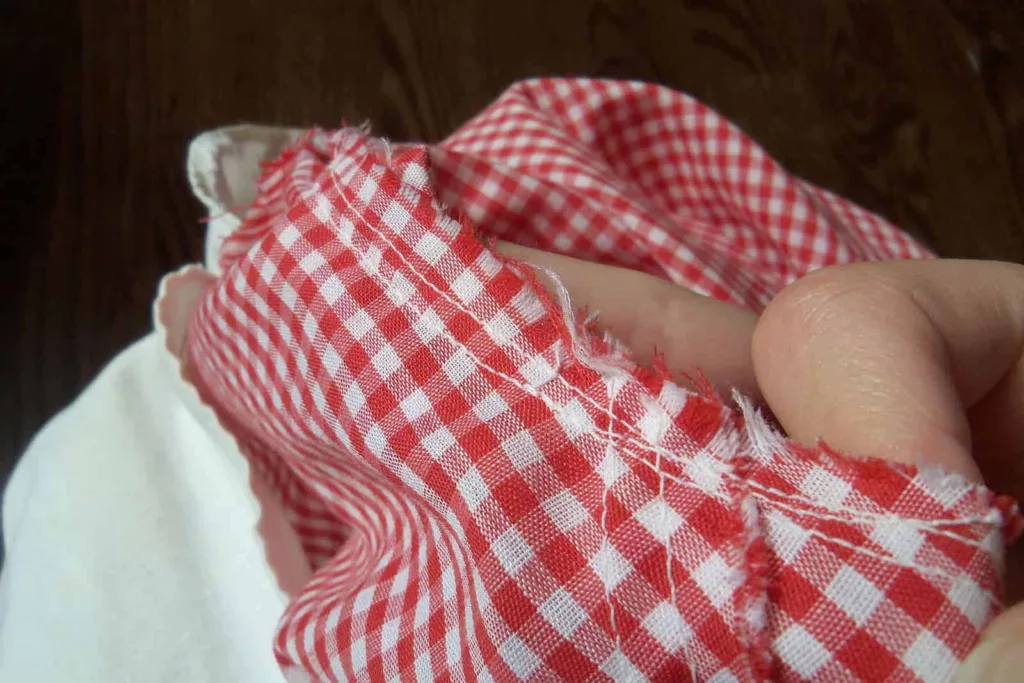
Closures:
Zippers: Check for smooth operation, durability, and whether the zipper teeth easily catch. YKK zippers are often considered high-quality.
Buttons and Snaps: Ensure buttons are securely attached, and the holes are reinforced. Snaps should close firmly and not pop open easily.
Hooks and Eyes: Verify that hooks and eyes are securely anchored and properly aligned for a secure closure.
Seam Construction:
Reinforcements: Look for reinforcements in stress areas like pockets, crotch, or shoulders. Bar tacks, binding or extra stitching can indicate increased durability.
Flat-Felled Seams: Commonly used in denim, these seams are sturdy and prevent fraying.
Double-Stitched Seams: Some garments may have double-stitched seams for added strength, such as in jeans, coats or tailored suits. See image above.
Overall Construction:
Pattern Matching: In patterned fabrics, check if patterns align at seams, indicating attention to detail. The pattern should flow throughout the garment evenly.
Lining: Quality garments usually have linings for comfort and to enhance the garment’s structure. The linings would be in satin fabric or a similar synthetic.
Details and Finishing:
Hemming: Check the quality of hems. Clean, even, and well-stitched hems contribute to the overall appearance. They can be overlocked, blind hemmed, or hemmed with binding.
Pockets: Ensure pockets are well-attached, have clean stitching, and are adequately reinforced.
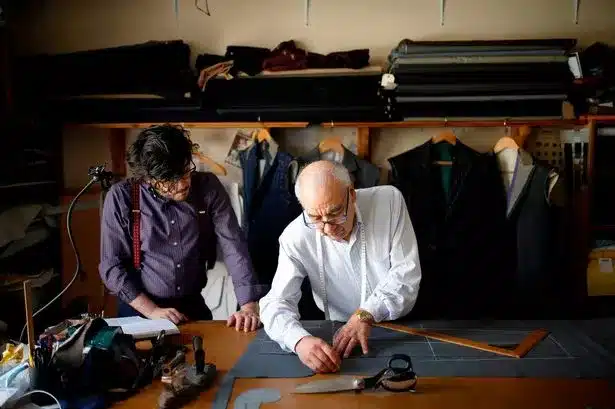
Understanding the Wear and Aging Process of Distinctive Vintage Fabrics
To understand the wear and aging process of distinctive vintage fabrics, we first need to recognize the unique characteristics that develop over time- due to regular use, aging, and exposure to environmental factors.
Fabric Changes:
Fading: Fabrics can fade over time, giving a softer and more muted appearance. This is particularly noticeable in vibrant colors.
Patina: Leather, and some fabrics develop a patina, a sheen or luster that comes from wear and exposure to oils and sunlight.
Textile Wear:
Thinning: Fabrics may become thinner in areas of high friction, like cuffs, shoulders and collar edges.
Pilling: Small fabric balls or pills may form on the surface due to friction. This is common in areas of movement like underarms and between thighs.
Stitching and Construction:
Visible Repairs: Vintage items might show signs of repairs-often done by hand. These repairs can add character and tell a story about the garment’s history. If you don’t mind a bit of “invisible repairs” in your selected garment?
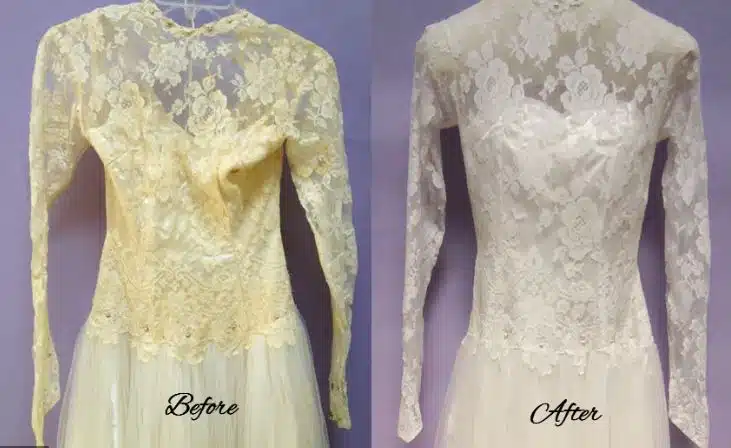
Loose Threads: Over time, stitching can loosen. Carefully executed repairs or reinforced stitching may be visible.
Color Changes:
Oxidation: Colors may change or oxidize, especially in fabrics like silk. Whites may become ivory or cream, and colors can shift subtly.
Staining: Vintage garments might have unique stains acquired over the years. These stains can become part of the item’s history. As long as they are not cigarette stains, which are unsightly.
Hardware Aging:
Patina on Metal: Metal hardware such as zippers, buttons, and buckles may develop a patina or tarnish, adding character.
Rust: Depending on the type of metal used, rust may appear over time, especially in humid conditions. This can be treated with natural methods, to remove most or all of it.
Elasticity and Stretch:
Loss of Elasticity: Elastic components, such as waistbands or cuffs, can lose their elasticity, affecting the original fit of the garment. Elastic can be replaced in this instance.
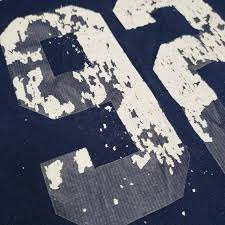
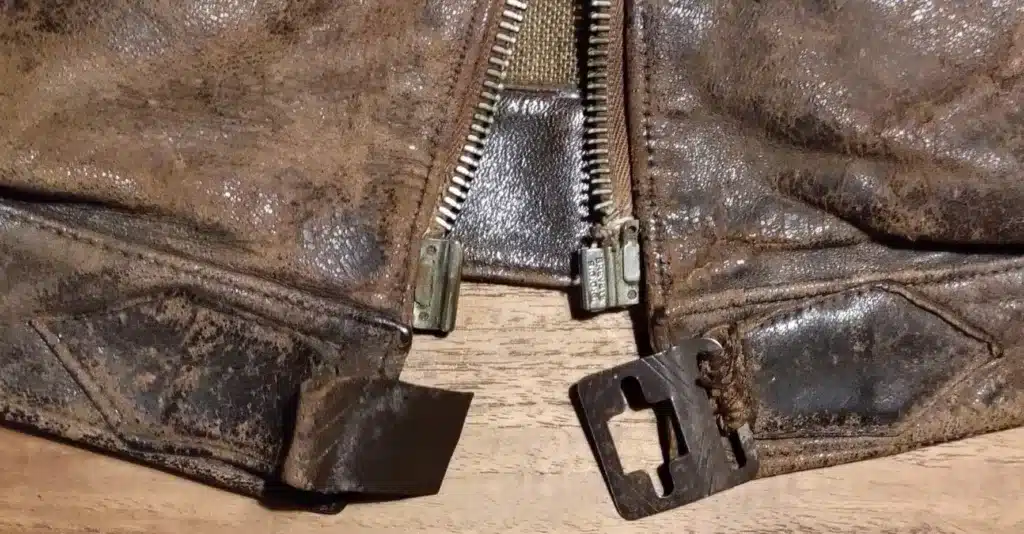
Prints and Graphics:
Cracking: Prints or graphics on vintage items, especially those from the mid-20th century, may crack and peel, adding a distressed aesthetic, which usually can’t be fixed.
Odor and Scent:
Distinctive Smells: Vintage items may carry unique scents due to years of storage, wear, and exposure. Proper cleaning with outside airying, can often mitigate this.
Labeling and Tags:
Fading of Labels: The labels and tags inside the garment may fade, fray or become illegible over time, contributing to its vintage appeal.
Overall Aesthetic:
Worn-In Look: Vintage fashion often exhibits a worn-in, well-loved appearance that adds to its charm and authenticity.
Unique Characteristics: Each vintage piece may have distinctive wear patterns, making it one-of-a-kind, especially if worn by someone famous , and you purchased it at an auction site.
Understanding and appreciating these aspects of wear and aging can enhance your enjoyment of distinctive vintage fashion. It’s a way of valuing the history and stories that garments carry with them over the years.

How to Spot Red Flags In Reproduction Vintage Clothing
Spotting red flags in reproduction vintage clothing is essential to ensure that you are purchasing authentic or accurately represented items. Keep these tips in mind during your search.
Fabric Composition:
Authentic vintage clothing was often made from natural fibers like cotton, wool, silk, and linen. Be cautious if the fabric is synthetic, or a blend that wasn’t common in the era it’s supposed to represent.
Label and Tags:
Check for labels and tags. Genuine vintage clothing often had specific labels that reflected the era’s fashion and design. Inaccurate or modern-looking labels can be a red flag.
Construction and Stitching:
Vintage clothing was often well-made with attention to detail. Look for quality stitching, finished seams, and well-constructed buttonholes. Sloppy or badly constructed may indicate a reproduction.
Zippers and Fastenings:
Vintage clothing used specific types of zippers and fastenings. Check for the type of zipper, buttons, or other closures used, and compare them to authentic vintage pieces from the same era.
Prints and Patterns:
Pay attention to prints and patterns. Familiarize yourself with popular designs and prints from different eras. Misrepresentations or modern interpretations may be evident in the patterns.
Color Palette:
Vintage color palettes were often different from contemporary ones. Be wary of colors that seem too vibrant or modern, for the era the clothing is supposed to represent
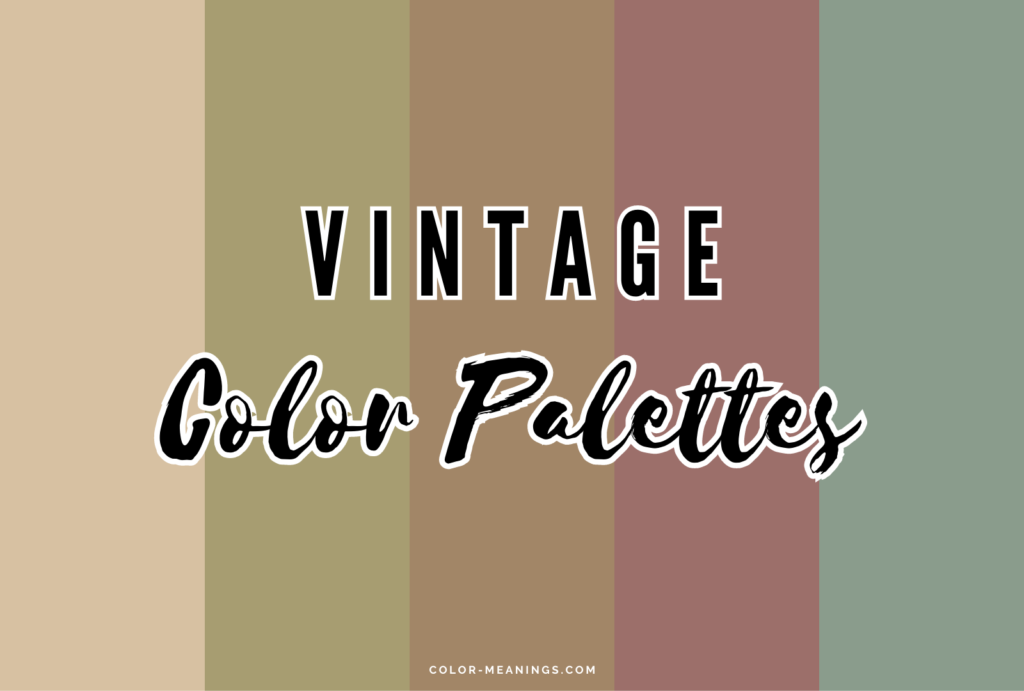
*As an affiliate - I may receive a commission if you click on a link and purchase through thissite*
Style and Silhouette:
Each era had its unique style and silhouette. If the clothing does not match the typical shape and style of the chosen era, it could be a reproduction.
Condition:
Authentic vintage clothing may show signs of wear, but should not appear overly distressed or have inconsistent aging. Be cautious if the distressing looks deliberate or unnatural.
Sizing:
Sizing has changed over the years. Vintage clothing may have different size labels than contemporary clothing. Be aware of this when checking the size on reproduction items. Always double check with a tape measure to be sure.
Research and Reference:
Educate yourself on the specific details of vintage fashion from different eras. Refer to books, online resources, and forums to gain knowledge, and to compare details with the item in question.
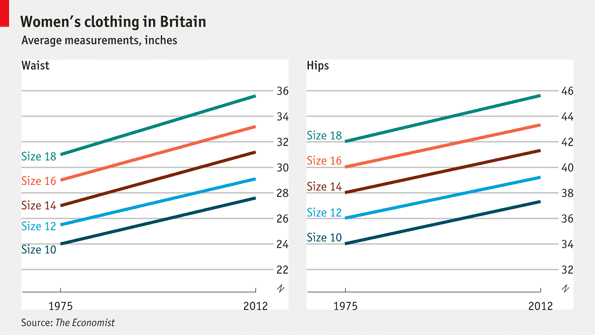
Seller Reputation:
Only buy from reputable sellers or stores with a history of dealing in vintage clothing. Check reviews and ask for more information, or pictures if you have doubts.
Price:
If a deal seems too good to be true, it probably is. Extremely low prices may indicate that the item is not authentic, or is of low quality.
Remember that expertise comes with practice and experience. The more you immerse yourself in the world of vintage clothing, the better you’ll become at spotting red flags.
The Fabric of History: Materials That Define Authentic Vintage Clothing
Examining natural fibers and textiles used in different eras provides valuable insights into the technological, cultural, and economic aspects of societies throughout history. Here is an overview of textiles used during those eras.
- Ancient Civilizations:
- Linen: Ancient Egyptians extensively used linen, a fabric made from the fibers of the flax plant. It was used for clothing, burial wraps, and sails due to its durability and breathability.
- Wool: In ancient Mesopotamia, Greece, and Rome, wool from sheep was a primary textile. It offered warmth and was commonly used for garments and household items.
- Medieval Period:
- Silk: Produced from the silkworm’s cocoon, was highly prized in medieval China, and later spread along the Silk Road. It became a symbol of luxury and was used for clothing, accessories, and even currency in trade.
- Renaissance to 18th Century:
- Cotton: The cotton textile became significant during the Renaissance and later, particularly in India. The spinning wheel’s invention facilitated cotton processing, and it became a major trade item.
- Brocades and Velvets: Intricate woven fabrics like brocades and velvets gained popularity during the Renaissance, showcasing the wealth and status of the wearer.
- Industrial Revolution (18th-19th Century):
- Cotton and Wool: The Industrial Revolution brought about advancements in spinning and weaving machinery, leading to the mass production of cotton and wool textiles. Factories emerged, transforming the textile industry.
- 19th Century:
- Synthetic Dyes: The discovery of synthetic dyes impacted the color range available for textiles. Previously, natural dyes from plants and insects were predominantly used.
- 20th Century:
- Synthetic Fibers: Nylon and polyester, the first fully synthetic fibers, were developed in the early 20th century. They gained popularity for their durability and versatility.
- Denim: Made from cotton twill, Denim became associated with American culture, particularly with the rise of jeans as casual wear.
- Contemporary Period:
- Sustainable Fibers: With increased awareness of environmental issues, there’s a growing interest in sustainable fibers like organic cotton, bamboo, and hemp.
- Smart Textiles: Advancements in technology have led to the development of smart textiles with embedded sensors and electronic components for applications in sports, healthcare, and fashion.
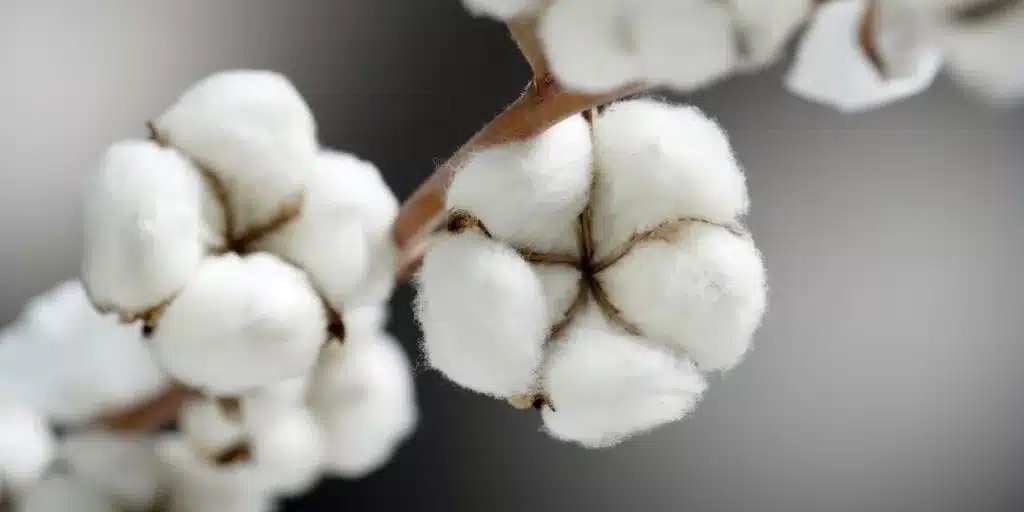
Studying the evolution of natural fibers and textiles provides a comprehensive view of how societies developed, traded, and adapted to technological innovations across different eras.
Hand-sewn Elements and Craftsmanship in Materials
Craftsmanship and hand-sewn elements in materials play a significant role in the charm and value of vintage apparel. We can’t ignore these key aspects of their importance:
- Quality and Durability:
- Hand-sewn elements often indicate a higher level of craftsmanship and attention to detail. This results in garments that are typically more durable and of higher quality. They generally lasted longer during antique or vintage times.
- Vintage clothing that has stood the test of time and maintained its integrity often features meticulous hand stitching, showcasing the skill of the artisan.
- Unique and Artisanal Touch:
- Hand-sewn elements add a unique, artisanal touch to vintage clothing. Each piece may have slight variations, making it distinct from mass-produced items. Referred to as “one-offs” or bespoke designs.
- The personal touch of a skilled craftsman can elevate a garment from being merely functional to a working piece of wearable art.
- Historical Significance:
- Vintage apparel often carries historical significance. Hand-sewn elements can reflect the fashion trends, techniques, and styles of a particular era, providing insight into the craftsmanship of that time.
- Studying the hand-sewn details of vintage garments can be a way to appreciate and learn about the history of fashion and textile arts.
- Sustainable Fashion:
- Hand-sewn and well-crafted vintage pieces contribute to sustainable fashion by promoting longevity and reducing the need for constant replacements.
- Vintage items that have been hand-sewn with care are less likely to end up in landfills, contributing to a more environmentally friendly approach to fashion.
- Appreciation for Traditional Techniques:
- Vintage apparel often showcases traditional sewing techniques that may be less common in modern, mass-produced clothing.
- Understanding and appreciating these traditional techniques can foster a connection between the wearer and the historical roots of fashion craftsmanship.
- Collector’s Value:
- Hand-sewn vintage pieces are often sought after by collectors and enthusiasts. The rarity and craftsmanship can increase the value of the garment as a collectible item.
- Collectors appreciate the skill and effort that went into creating these pieces, and the hand-sewn details may become defining features in the evaluation of an item’s worth.
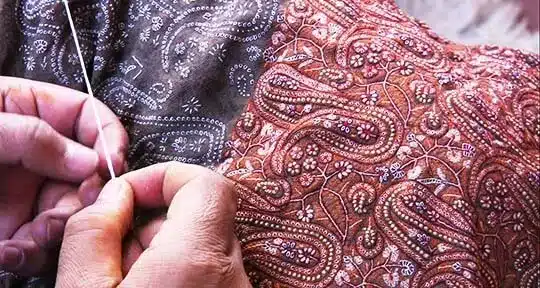
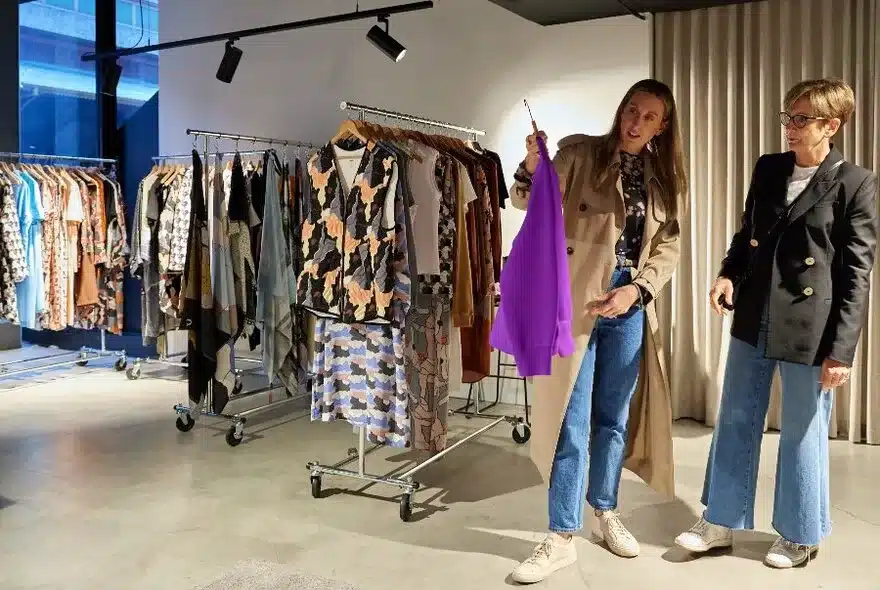
How Material Sourcing and Fabric Technology had Evolved
Material sourcing and fabric technology have undergone significant advancements over the years, driven by innovations in science, technology, and sustainability. The evolution of this is simply remarkable:
Traditional fabrics like cotton, wool, and silk have been used for centuries. However, there’s a growing emphasis on sustainable and organic farming practices in their cultivation. Advances in breeding and cultivation techniques aim to improve the quality and yield of natural fibers while minimizing environmental impact.
The development of synthetic fibers, such as nylon, polyester, and spandex, has revolutionized the textile industry. These fibers offer various properties like durability, elasticity, and moisture-wicking capabilities.
Continuous research focuses on enhancing the performance characteristics of synthetic fibers and reducing their environmental footprint through recycling and eco-friendly production methods.
The integration of technology into fabrics has given rise to smart textiles. These fabrics can incorporate electronic components, sensors, and other technologies for applications in health monitoring, sports, and fashion. They also hold applications across various defence domains such as soldier systems, uniforms and body armour. Other examples include temperature-regulating fabrics, conductive textiles, and garments with embedded sensors for monitoring vital signs.
There’s a growing trend towards using recycled materials in fabric production. Post-consumer and post-industrial waste, such as plastic bottles and textile scraps, are being repurposed into new fabrics. Upcycling involves transforming discarded materials into higher-value products, reducing the demand for new raw materials.
Nanotechnology is playing a role in fabric development by altering the structure of materials at the molecular level. This can result in improved performance characteristics such as water resistance, stain resistance, and enhanced durability. However, innovations in biodegradable fabrics aim to address the environmental impact of textile waste. Fabrics made from materials like lyocell (a type of rayon) and organic cotton are designed to break down naturally over time.
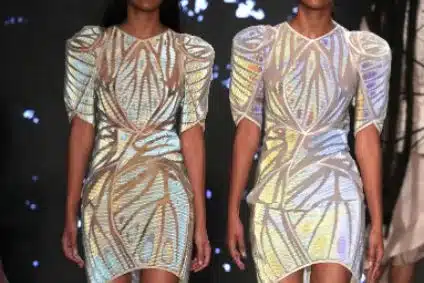
3D printing technology is being applied to fabric production, allowing for intricate and customized designs. This can reduce waste by creating garments with precise dimensions, making a template for that particular design.
Increasing awareness of environmental issues has led to a rise in sustainable practices in material sourcing and fabric production. This includes using eco-friendly dyes, reducing water usage, and adopting fair labor practices, among manufacturing.
Blockchain technology is being explored to enhance transparency and traceability in the textile supply chain. This helps in ensuring the authenticity of sustainable and ethically sourced materials.
The emerging field of biofabrication involves growing fabrics from cells in a laboratory setting. This can lead to the production of sustainable and cruelty-free alternatives to traditional animal-derived materials, or testing.
In summary, the evolution of material sourcing and fabric technology is characterized by a shift towards sustainability, innovation, and the integration of technology to meet the demands of a changing world. These developments aim to create textiles that are not only functional and fashionable but also environmentally friendly and socially responsible.
Assessing the Value and Rarity of Authentic Vintage Clothing Materials
When assessing the value and rarity of authentic vintage clothing materials, this involves considering various factors – the type of material, age, condition, brand, and cultural significance.
Type of Material: Natural fibers such as silk, wool, and cotton are often considered higher quality than synthetic materials. But, exotic or rare materials, such as vintage furs, can significantly increase the value of a garment.
Age and Era: Older garments are generally more valuable, especially if they are in good condition. Clothing from specific eras, such as the 1920’s, 1950’s, or 1970’s, might be more sought after by collectors.
Condition: The overall condition of the garment is crucial. Well-preserved items with minimal wear, tear, or damage are more valuable. This also includes original buttons, zippers, and other components that can add to the authenticity and value.
Designer or Brands: Items from well-known designers or high-end brands are typically more valuable. The reputation of the designer or brand can significantly influence the price. Limited edition or collaboration pieces may also be more sought after.
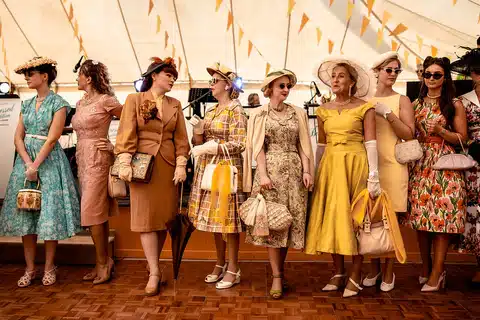
Cultural Significance: Garments with historical or cultural significance may have higher value. This could include clothing worn by celebrities, items from a specific event, or pieces that represent a particular subculture.
Provenance: The history or provenance of a garment can impact its value. Knowing the item’s origin, previous owners, or any notable events associated with it, can increase its appeal.
Rare Prints or Patterns: Vintage clothing with unique prints, patterns, or designs that are no longer in production can be highly valuable.
Demand and Trends: Current fashion trends and demand for specific styles can influence the value of vintage clothing. Certain styles may come back into fashion from time to time, increasing the desirability of related vintage pieces.
Availability: The rarity of a particular material or style can significantly impact its value. If a certain type of fabric or design is scarce, it can drive up demand and prices.
Expert Appraisals: Seek the opinion of experts or appraisers who specialize in vintage clothing. They can provide insights into the rarity and value of specific materials or pieces.
It’s essential to note that the vintage clothing market is subjective, and individual preferences play a significant role in determining value. Additionally, the condition and authenticity of the item are critical, as alterations or reproductions, can affect its worth.
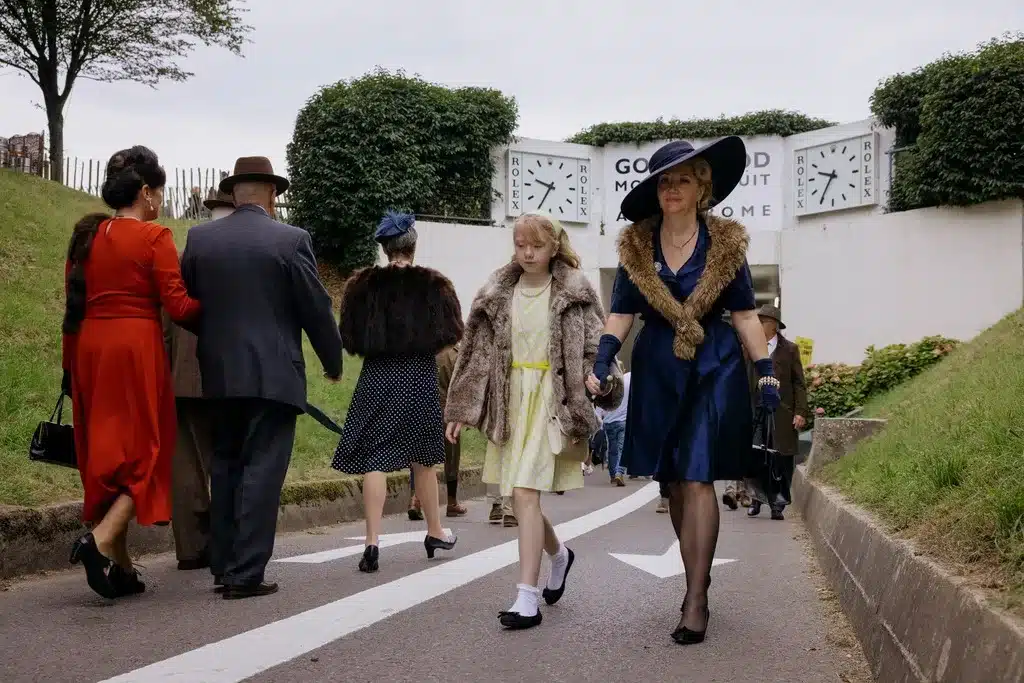
My idea is to bring to you a thorough insight on how to spot authentic vintage fashion, especially when searching for original pieces, as knowledge – is everything.
Helen
Wishing you well.
helen@vintageclothesandaccessories.com
Connect via our socials or get in touch below:
https://www.facebook.com/vintageclothesandaccessorydesigns
https://www.instagram.com/vintageclothesandaccessories
